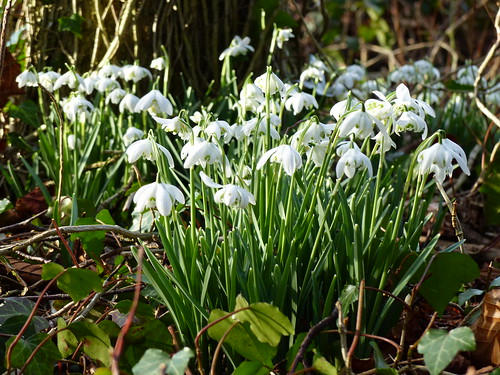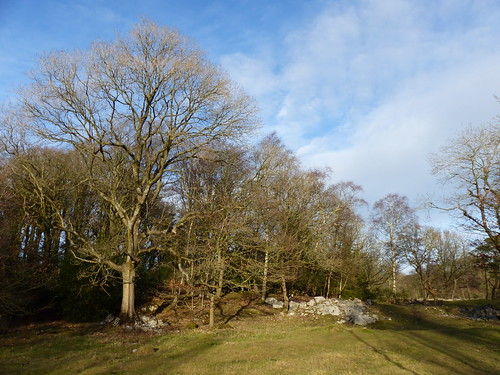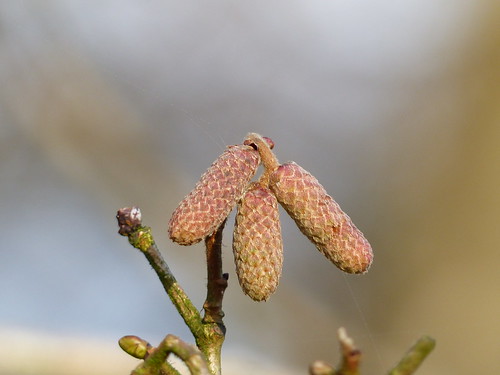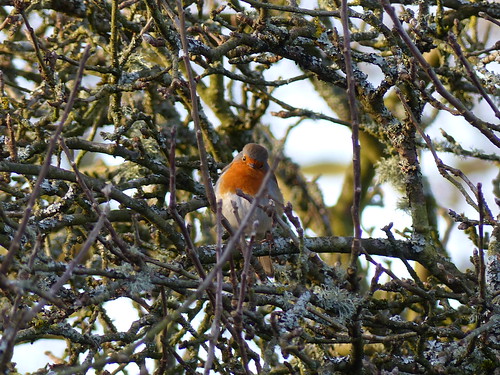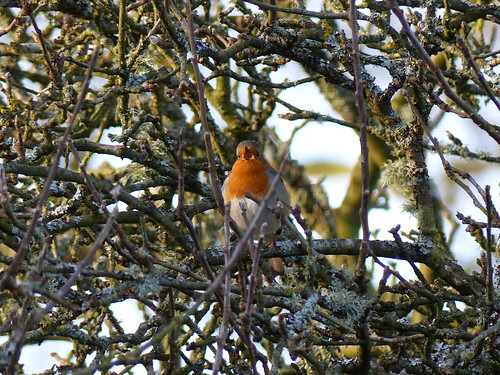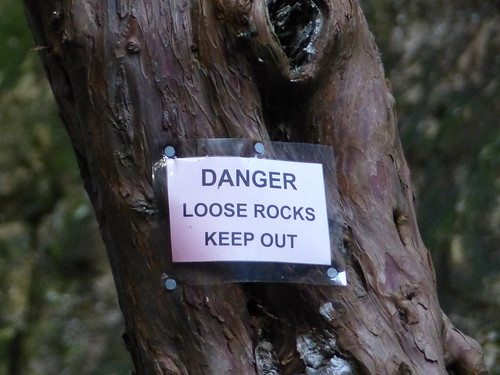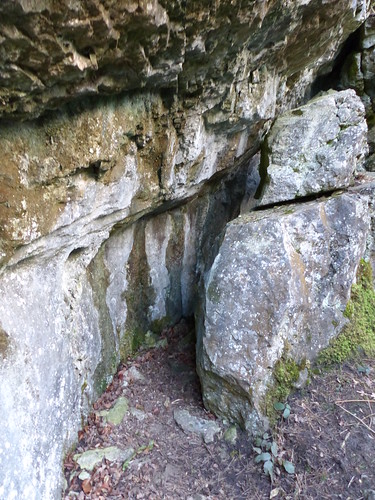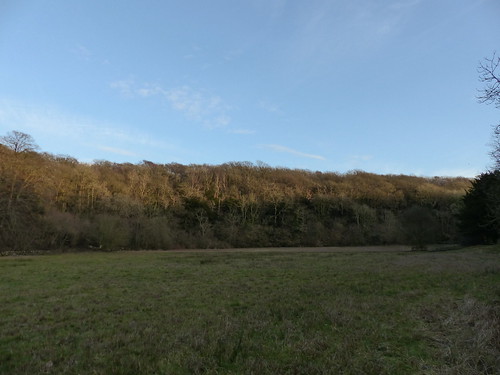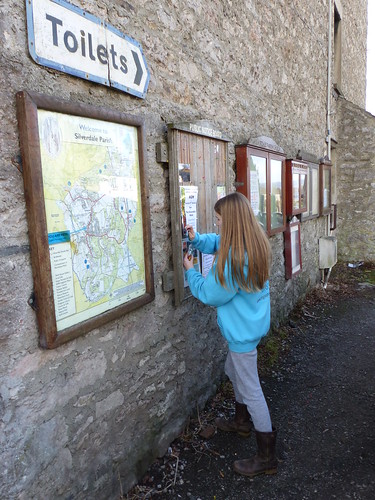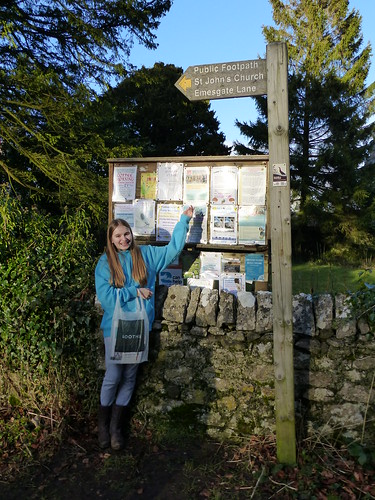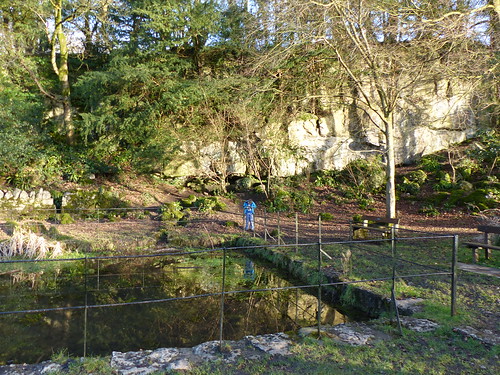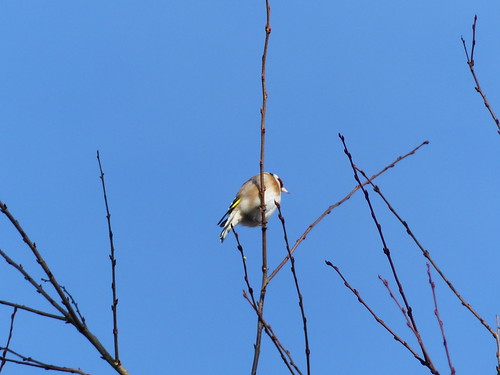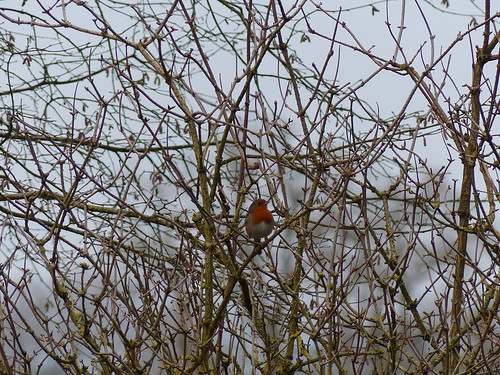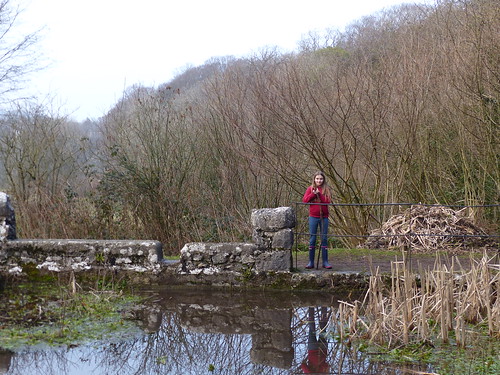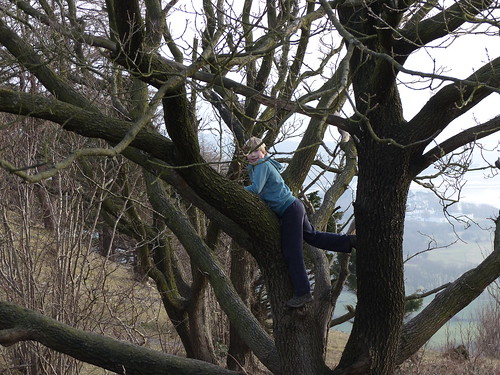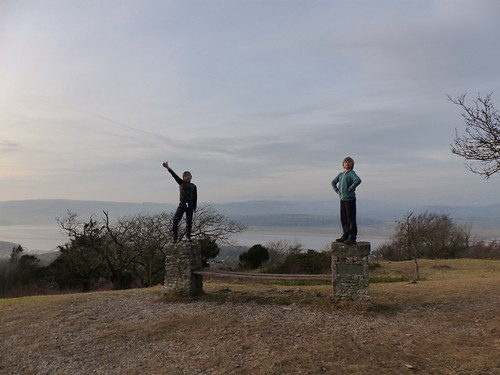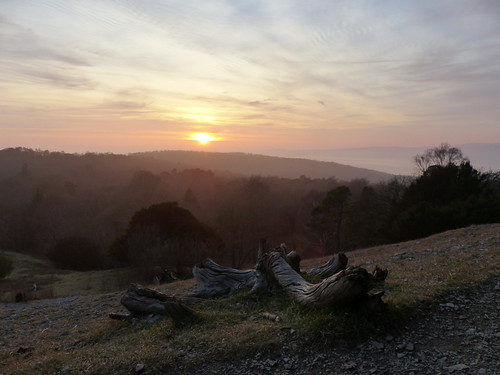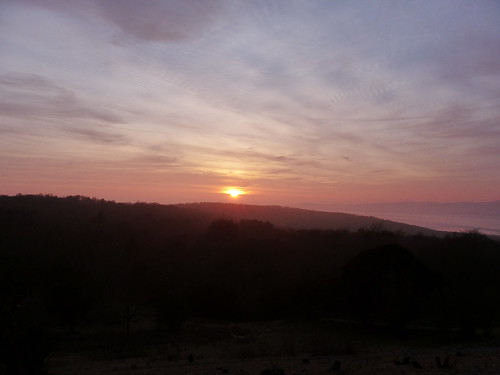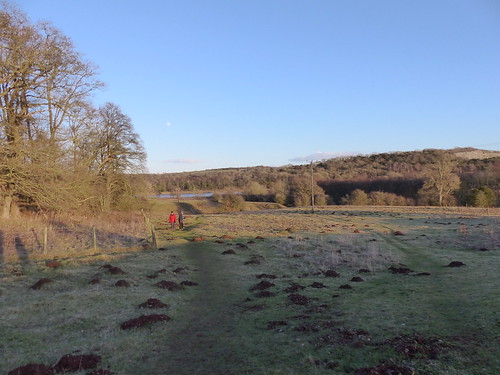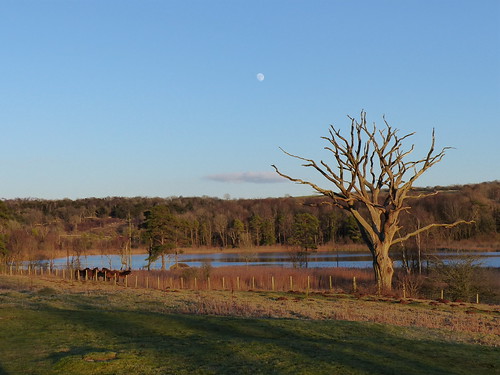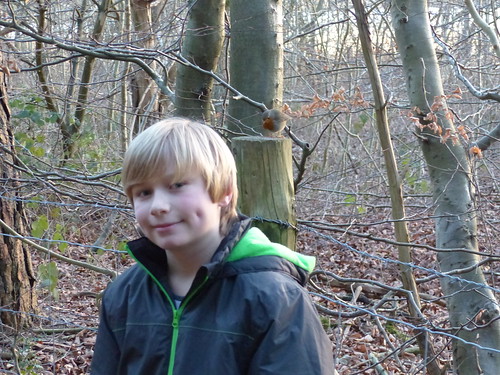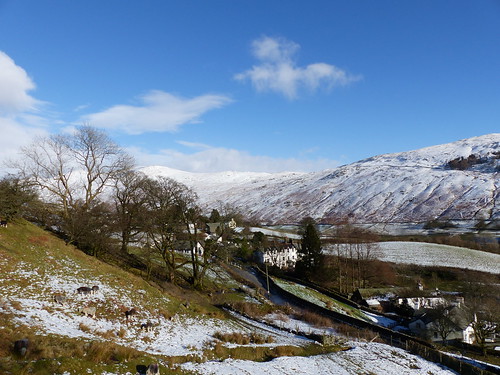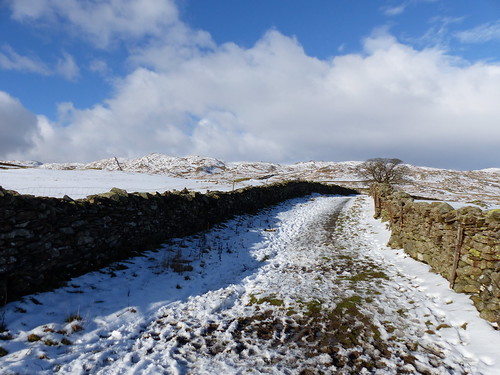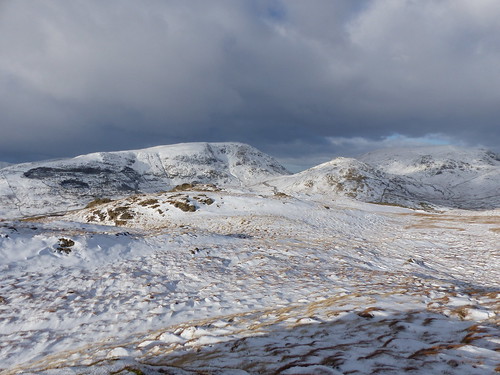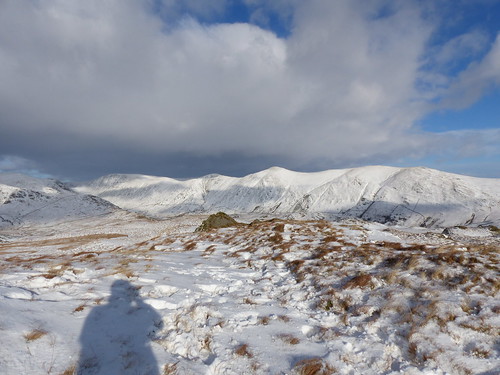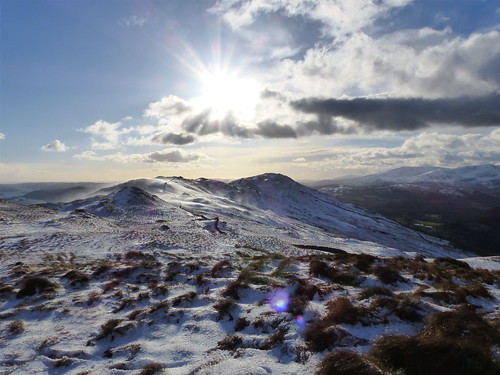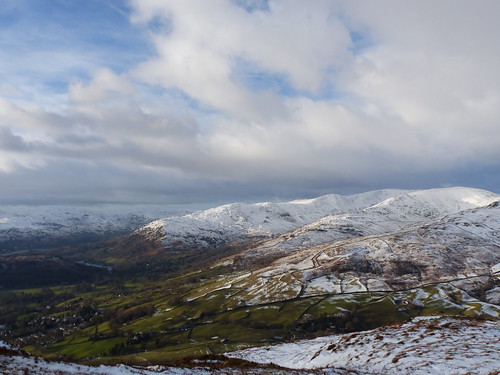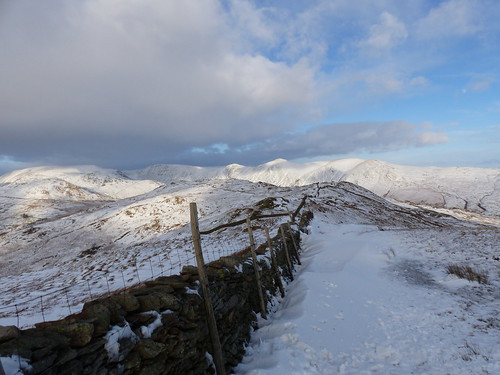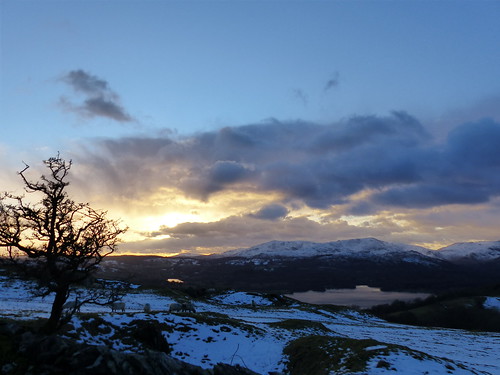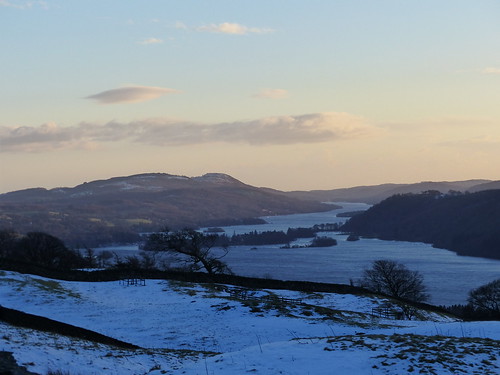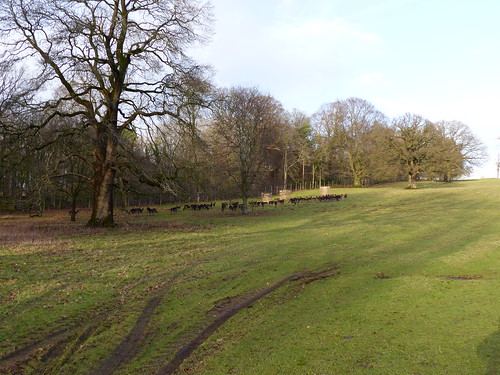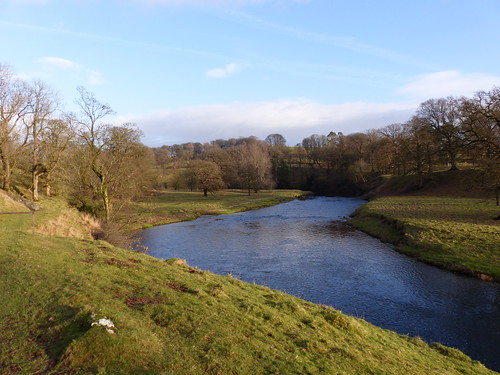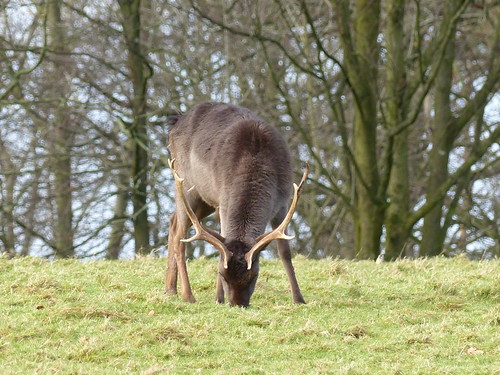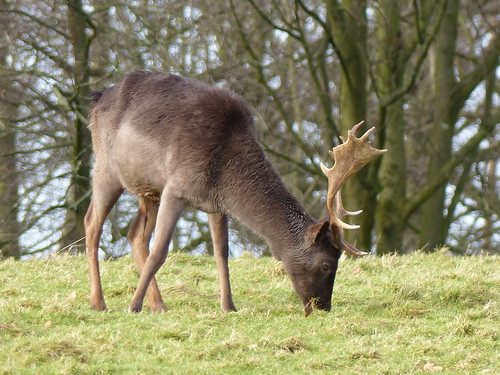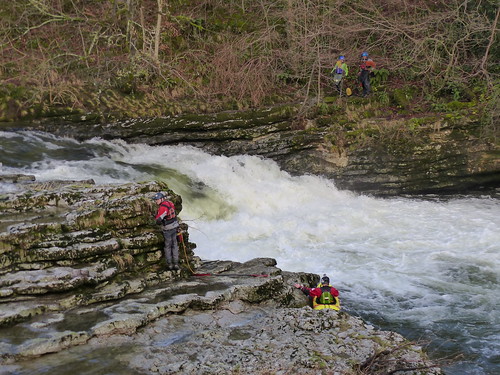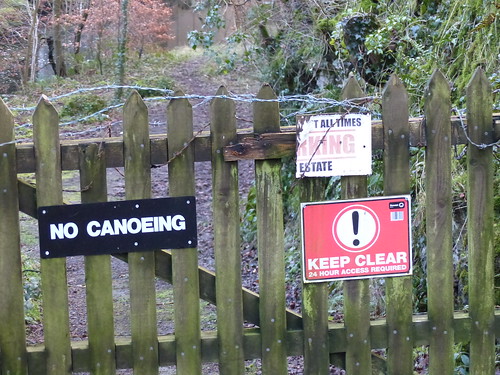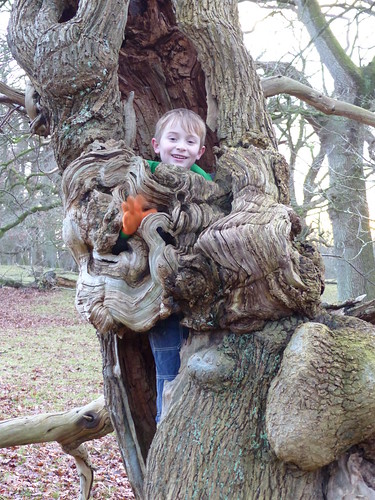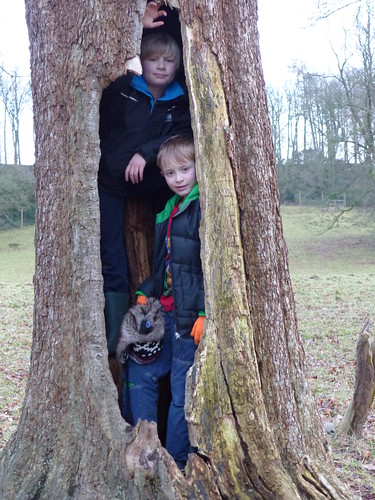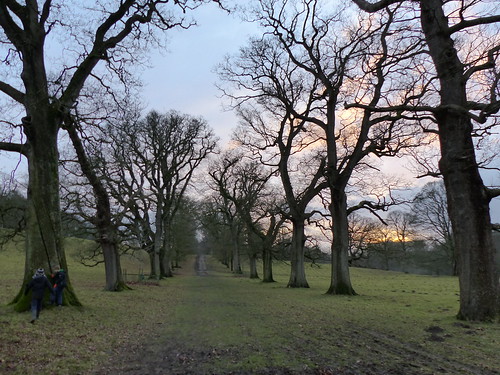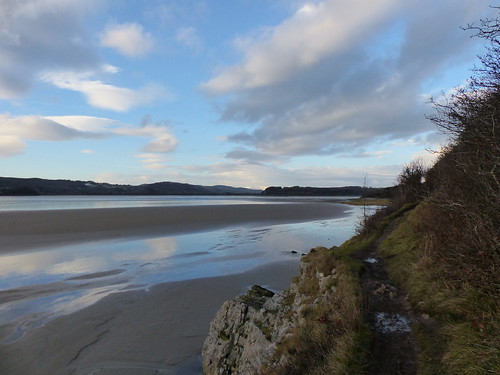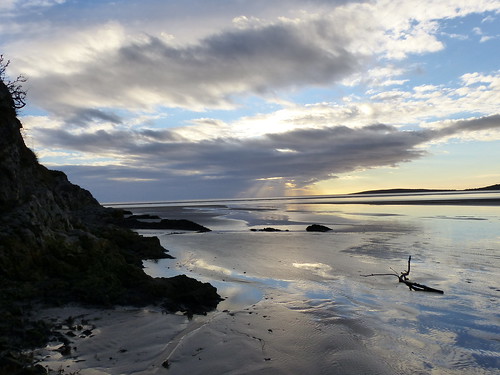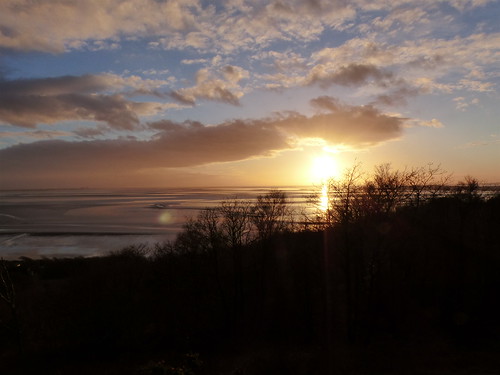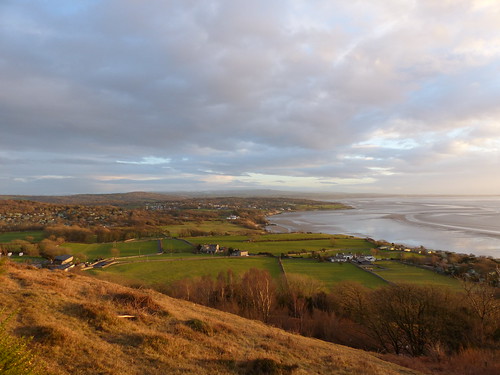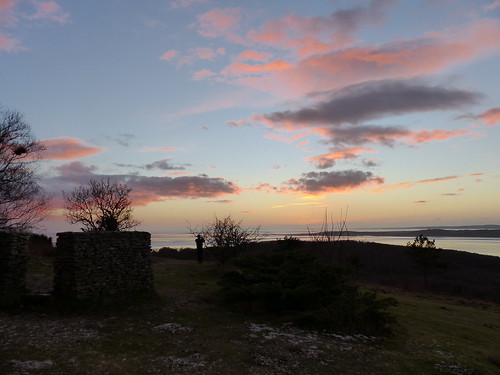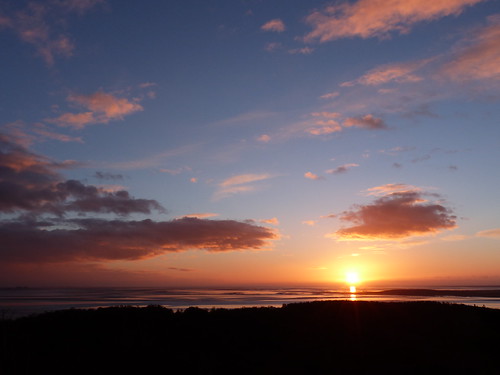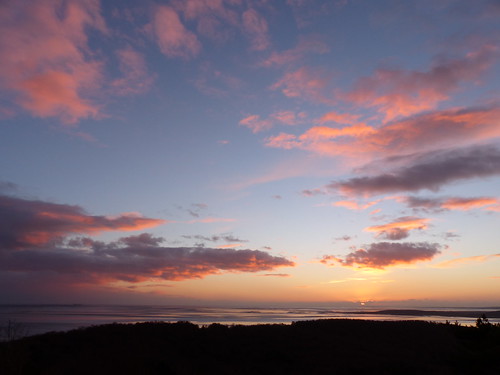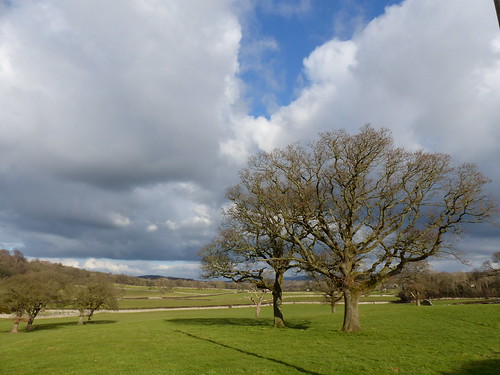
At the tail-end of every winter comes at least one day when the sun shines, the wind drops, the temperature is mild, and it feels as if spring is approaching. A day like that has a few predictable effects on me – one of them is that I get over excited and write a post declaring the arrival of spring. Another is that I dig out my copy of e.e.cummings selected poems, start reading them again, and then quoting them, usually in the very blog-post which is prematurely heralding the onset of spring. Valentine’s day here was just such a day and this post was originally destined to be another of those mistimed fanfares.

But then Chrissie posted a comment on a previous post:
I wish I could do birds. Love watching and spotting them, but can’t remember them at all. 😦 Well, other than things like Robins and Blackbirds….
And I decided that maybe I would write about bird-watching instead. Except, now I feel a digression or two coming on. Firstly: poetry. I know not everybody reads or likes poetry. Personally, I don’t get it. Or quite often I don’t. But then, somehow, seemingly by accident, I’ve acquired quite a collection of poetry books. And paradoxically it’s the poets I find most impenetrable to whom I keep returning. Cummings particularly, but also Eliot and Dylan Thomas. (This isn’t entirely accurate, I like Robert Frost too, and his oeuvre doesn’t quite fit my argument, so let’s skate over that point!)
In Cumming’s ‘Selected Poems’ there are certain favourites I read and reread. Most of them I’ve already quoted in full on the blog over the years – ‘nobody loses all the time’, ‘etcetera’, and the one which begins ‘I thank you God for this most amazing..’ which I think of as ‘Illimitably Earth’. Then there are others which have small parts or phrases which I really like. For example, ‘mud-luscious’ and ‘puddle-wonderful’ from the first poem in the book which features a ‘little lame balloonman’ and which I still can’t make head or tail of. And then there are lots of others which leave me…well, bemused, befuddled and confused. But here’s the thing: I’m continually drawn back to the book, and my little collection of favourites keeps growing. I was, of course, tempted to quote another, perhaps ‘Anyone lived in a pretty how town’, but had to restrain myself – after all this is a post about bird-watching. So I’ll content myself with a scrap:
o to be in finland / now that russia’s here)
Which I’m guessing was written in 1939 when Russia invaded Finland. (Some things hardly change).
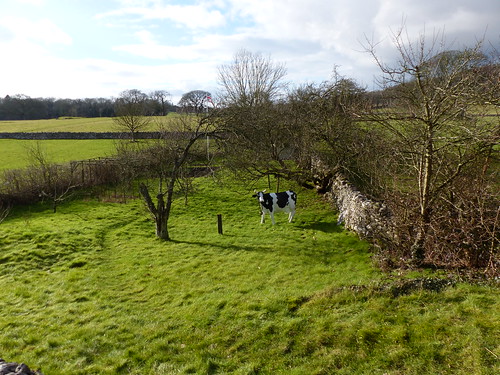
Silverdale has many small orchards. But only one of them has a resident plastic cow.
Digression alert: secondly – football. (Pay attention, stop groaning at the back). That Saturday, as most Saturdays, had started for little S and I, with a trip to his football training. Now, I shall have to be careful here, because S may one day read this, but, well, suffice it to say that it seems unlikely that S will ever set the football world alight. But he loves his football, and since he started attending training, and playing regular matches, he has come on leaps and bounds. At the end of each session, the coaches always ask ‘What have you learned today’. The answers are usually the same – passing, tackling, marking, shooting, dribbling, etc. But this week, for some reason, there weren’t many kids there, perhaps because it’s half-term, and by the end of a three-a-side match, those that were there were more than usually exhausted. Here’s the final exchange, as best as I can remember it:
“So, what have you learned today?”
“Passing.”
“Nothing.”
“Nothing! Thanks for coming. What about you S, what have you learned?”
S didn’t reply, but was clearly racking his brains, trying to find a sensible answer. His coach had a suggestion:
“Alright, I’ve got one for you: Never giving up. You never give up, you always keep chasing.”
I was really chuffed with that. For me that’s the principal way in which S has improved – he’s dogged. I don’t play much football anymore. (I’m almost ready to concede that I may never be called upon to pull on the number 7 shirt for Leicester City.) But when I did play a lot, I always thought that whilst I lacked any great talent for passing, tackling, marking, shooting, dribbling, etc., I did at least run around a great deal. I know – it’s not the most flattering thing you can say about a footballer ‘He runs around a lot’ (although it didn’t seem to stand in the way of Robbie Savage’s career), but the thing is, I loved playing football anyway, and S does too.
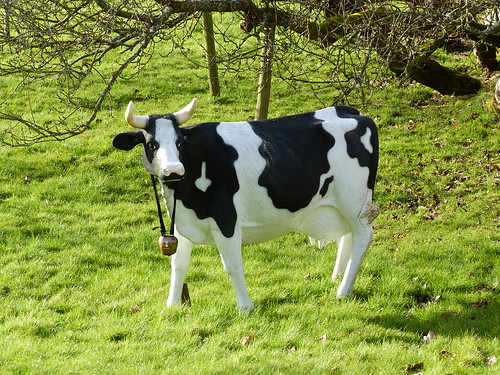
No, don’t ask: I don’t why either.
Now, where was I? – bird-watching!
I don’t tend to think of myself as a bird-watcher. I’m a walker who likes to spot birds whilst I’m walking and likes, generally, to know a bit about the things I see when I’m out and about. My friend and colleague The Proper Birder; now she’s the genuine article. A dyed-in-the-wool fanatic. Her planner is plastered with beautiful photographs of birds, beautiful photographs which, I should add, she has taken herself. Her holidays are bird-watching holidays. She knows everything about birds. All of my queries are referred to her and sometimes I think she knows the answer long before I’ve finished asking the question. Recently I came in from a lunchtime stroll, a little excited because I had seen ‘a wagtail, like a pied-wagtail, but not black and white enough. More grey.’ I thought maybe I’d stumbled upon an off-course migrant, a rare visitor which would set the twitchers’ jungle-drums rumbling. But no: it was a pied-wagtail after all – a juvenile.
During another recent lunchtime we were discussing those lucky few who manage to make a living from their knowledge of birds – working for conservation bodies, ringing, estimating populations etc. I put it to her that she had all the skills and knowledge herself to make the transition to that kind of work, but she said that no, that isn’t the case.
So, if even The Proper Birder doesn’t think she’s qualified to be, well, a proper birder – what chance do the rest of us have? You can probably see where I’m going with this – it doesn’t matter whether you ‘get’ all poems or any particular poem; it doesn’t matter whether you can mesmerise like a Weller or a Worthington; it doesn’t matter whether you know all of the names of birds – just so long as you’re enjoying yourself!
But – yes, there is a but – I do know what Chrissie means. Not long after I started this blog I decided I would try to learn to recognise some birdsongs. Progress has been incredibly slow, although at least there has been some progress. But then again, it often feels like I take two steps forward and one step back. I have the same frustration with clouds and rocks. Ask Andy. I repeatedly quiz him about geology and nephology (the study of clouds!), but for some reason the answers, fascinating though they are, just won’t stick. Maybe I gave up to easily. I think we’ve got a book somewhere of ‘geological walks’ around the Lake District, but if we have, we’ve never tried any of the walks. And, although I was enjoying reading Gavin Pretor-Pinney’s ‘Cloudspotter’s Guide’, I was distracted by something else I wanted to read (which often happens) and I never finished it – I shall have to dig it out and try it again. When I think about it, I also bought a book, with an accompanying CD on birdsong. And a DVD on British birds. (Not that I’m a birdwatcher, you understand.)
So, some February resolutions (bit late for New Year’s)
- Try some ‘geological walks’ (presuming I’m right about that book).
- Read The Cloudspotter’s Guide
- Redouble my efforts with birdsong.
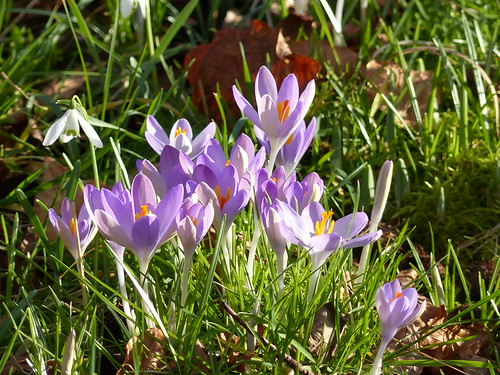
Every year I admire a superb display of snowdrops and crocuses under a Copper Beech in a garden on The Row, but, for some reason, I’ve never taken photographs before. Now I have.
So, Chrissie, with the caveat that I am very far from being expert: this time of year is fabulous for getting to know some of our small, resident woodland species of birds: the birds are very active, but there are no leaves on the trees, so they’re a bit easier to see than they will be in late spring or summer. A bright sunny day is best, if luck is on your side, if only because it’s easier to see clearly what you’re looking at. A woodland is good, I find the edges are often the most rewarding, but a hedge which has been left alone for a while is maybe as good or better. Even a garden can be good, if there are trees nearby.

One of my favourites are long-tailed tits. They’re tiny, one of our smallest, although the tail makes them more conspicuous than they might otherwise be. The tail is distinctive. Also look for a hint of pastel pink. They’re always in flocks, moving together, and always on the move, bobbing and flitting about, hanging quite acrobatically from twigs and branches. Which makes them very difficult to photograph. I’ve tried no end of times and this is the best to date. I’ve never seen them on a feeder before. Their nests are amazing. Appropriately, sort of egg-shaped, with a small opening. Made from moss and spiders’ webs, lined with thousands of feathers and disguised with a coating of lichen. I’ve only seen one just the once. Both parents feed the young and other adult males will also help, brothers, apparently, of the male bird.
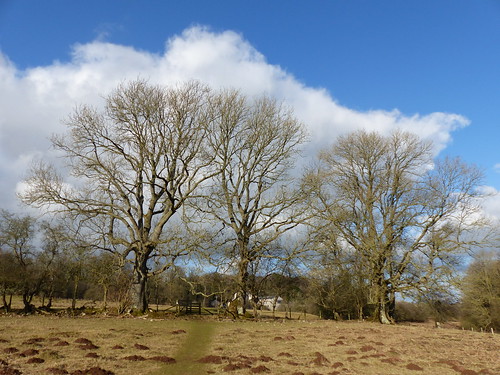
I’m not very good at this myself, but it helps if you have the patience to keep still. Because it was warm, and because I’m full of cold and finding walking a bit of a challenge at the moment, I sat under these trees for a bit. Once I’d been there for a while the birds started to appear amongst the branches. None of my photographs were very spectacular, but there were chaffinches, blue tits, great tits, wood pigeon, and a solitary song thrush.

Oh…and not forgetting thumper.
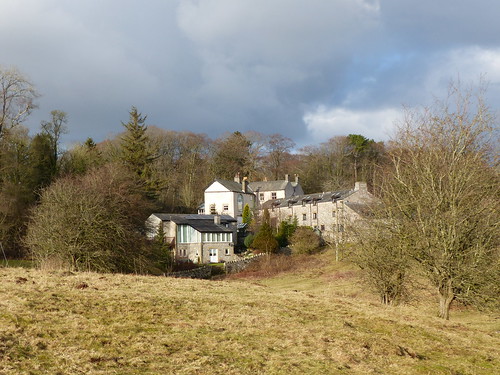
Challan Hall.

Haweswater.

This is a marsh tit. This is another bird I’ve usually struggled to photograph, so again, I was quite pleased to get this. Willow tits look exactly the same (this probably isn’t true, but it’s close enough for me). How do I know which it is then? Because The Proper Birder once told me that Willow Tits don’t live in this part of Lancashire. One way to tell them apart is by their songs. This is a case in point for my lack of progress with birdsong – I’ve previously announced on the blog that I have learned to recognise a marsh tit’s song, but I’ve subsequently lost that ability again. You might mistake a coal tit for a marsh tit, but they’re only superficially similar. A coal tit has more black on its head, with white cheeks and a white stripe up the back of its head.

Forgive me yet another digression – I always enjoy snowdrop season. My favourite spot is in the woods by Haweswater. It seems to me that the snow-piercers there have spread and are now making an even better display than before. This photo only shows a part of that display.
One frustration with my new camera is that it doesn’t have a similar macro facility to the Olympus and I haven’t fully mastered yet how to photograph small flowers to best advantage.
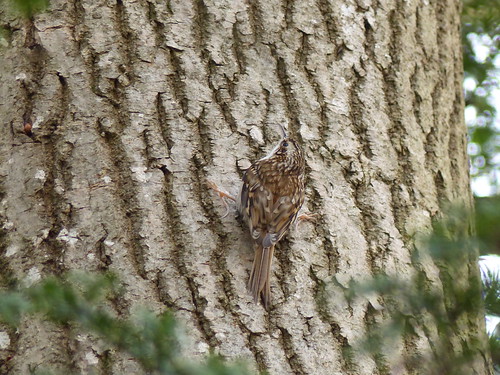
Sometimes, you just need to get lucky. I was watching a small bird flying around in the lowest branches of a yew tree. I thought it was a goldcrest, but it was so dark under the dense yew that I couldn’t really be sure. Which was a shame, because I haven’t seen a goldcrest for ages. But then on a adjacent trunk – a treecreeper! Because of their superb camouflage, I don’t see these too often. They tend to spiral their way around a tree trunk and so often disappear and reappear from view. I’ve never successfully photographed one before. This one stayed frozen on the spot for a while. Apparently that’s quite characteristic behaviour – they rely on their disguise to protect them. Look at those huge rear toes, adapted for clinging to a trunk.

A great tit. Here’s a first birdsong to learn Chrissie, listen for them calling you by name (sort of) teecher, teecher, teecher. Confusingly, great tits have a wealth of other calls and are also good mimics. I tend to assume that anything I can’t recognise is a great tit being awkward. Which will be right at least once in a while. Learning birdsongs, even if it has been painfully slow, has helped – as I’ve got to grips with a few I’ve also begun to get a grasp of where different kinds of birds are likely to be calling from and also, of course, if you recognise the call (which is satisfying in itself) you have an idea what it is you’re looking for.
I don’t have any photographs of the group of four jays which I watched for a while amongst the trees. Jays are very shy, and although I was initially very close to them when I saw them, I never got a complete view without an intervening branch spoiling the shot.
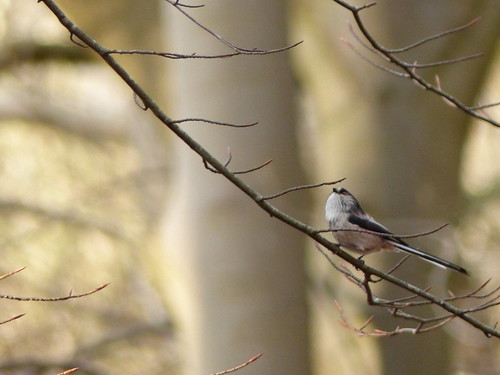
I spent a while watching and trying to photograph another group of long-tailed tits. With familiar results. This is still probably my second sharpest photo of one. It does at least show the pink flush, and the ‘ball and stick’ shape they have.

The light as I crossed the boardwalks by the lake was lovely.
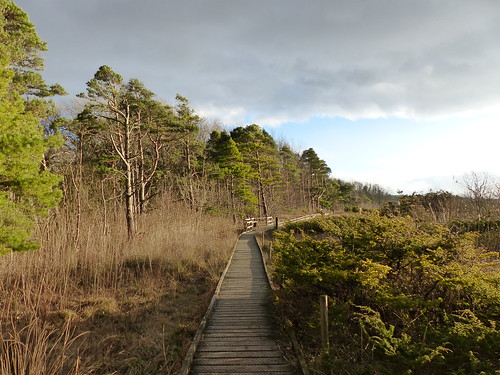

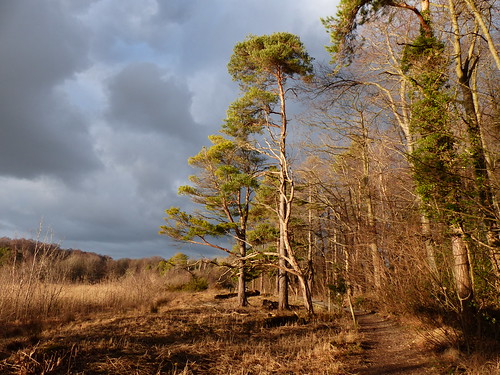

Blue tits are noted for their rudeness, and just won’t turn to face the camera.
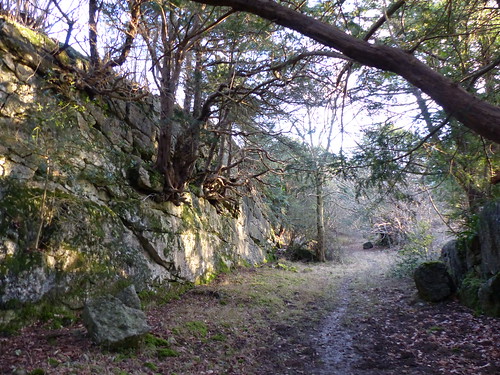
This is a bit of The Trough – an unusual local feature. Limestone bedding planes have turned through 90 degrees and softer rock (I think mudstone: there’s that lack of geological confidence again) has eroded away leaving a natural lane – straight and high-walled. I followed the trough (a little bit off-piste here, shall we say, don’t tell anyone will you?) to Trowbarrow quarry.
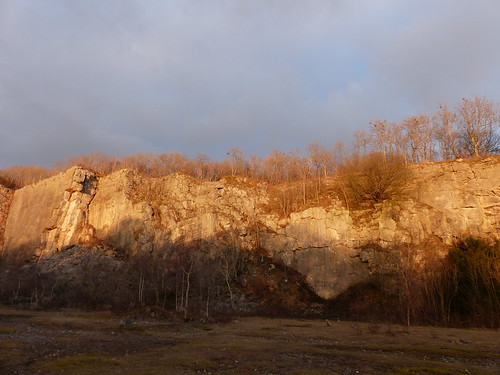
I knew I was arriving before I could see the quarry, because of the bird calls overhead. At Trowbarrow there are always, and I mean always, jackdaws.

Once upon a time I didn’t know a jackdaw from a crow. Seems astonishing now. They’re sociable – crows aren’t. They make a din, shouting ‘jack-daw’ the whole time. And they don’t look like crows, they’re much more natty and neat, smaller and not half so black.
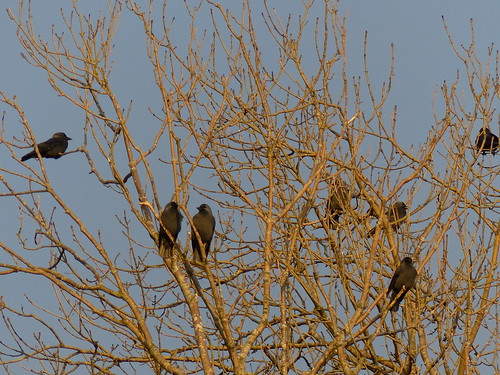
No real sunset to end this post – I must be slacking. There was a nice bit of colour in the sky as I crossed the golf course though.
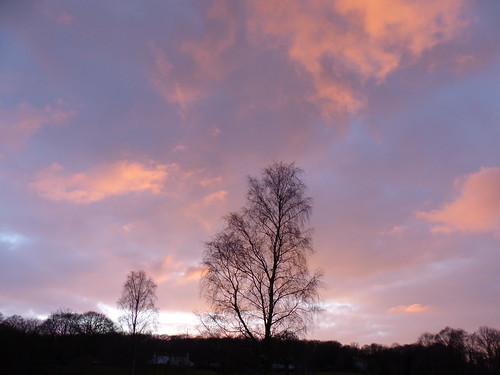
I know that I’ve already tried your patience, by waffling on at ridiculous length (I hope you made a cup of tea at the outset), but even without a sunset, I feel like I need some kind of conclusion. This is probably some kind of blogging cardinal sin, but I’m going to quote myself, from one of the first posts I wrote on the blog, back in 2008, because this neatly sums up why I think it’s worth while being dogged, persevering, making an effort to know a little bit about the things you see when you’re out for a wander:
This book, then – apart from being meant for amusement – is merely intended to illustrate how much free enjoyment anyone can derive from simply keeping his or her eyes open in going about normal daily affairs.
Richard Adams – from the Introduction to A Nature Diary
How’s that for a manifesto?
He goes on to mention stars, birds and wildflowers as things that anyone could spot and identify with the aid of a suitable field guide. You might add clouds, fungi, trees…… Or even shopping trolleys and city-limit signs.
To be honest, even with the aid of a field guide I’m a pretty limited amateur naturalist. But I don’t mind. The thing is that it’s not the identifying that’s important, but the close attention required in order to make an attempt. By being aware of our environment we allow the possibility for the familiar to surprise us, for the local to become exotic.
A little bit more about ‘A Nature Diary’ on an even earlier post here.
I can also strongly recommend Simon Barnes’ book ‘How to be a Bad Birdwatcher’ from which I sort of stole the post title.




